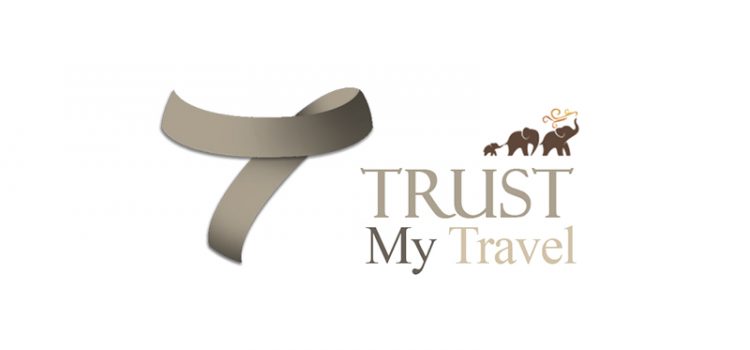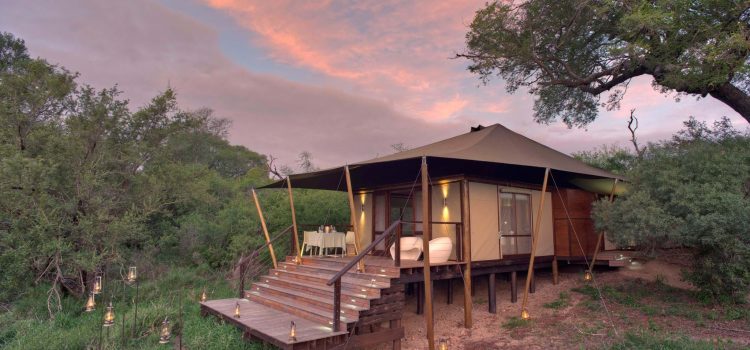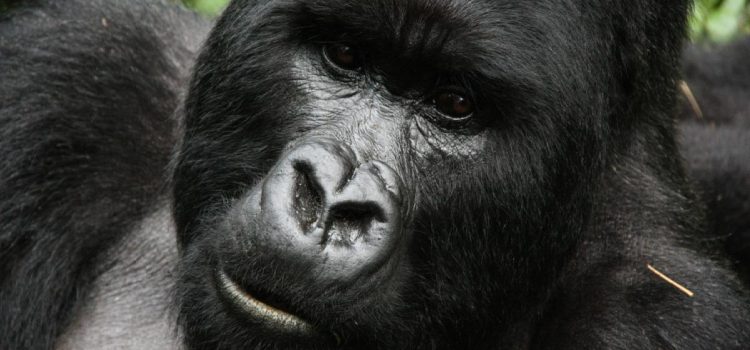Namibia is a breathtakingly beautiful country, full of stark contrasts, dramatic scenery, endless blue skies, intense heat and sand dunes that go on forever. The country’s most recognisable icon is its national symbol, the Oryx, standing alone on a cinnamon-coloured dune in Sossusvlei with the far-flung horizon and the rising sun as a backdrop.
But how do these and any other creatures survive in this harsh desert environment? The answer lies in their extraordinarily unique way in which they have adapted to one of the harshest climates on earth. Here are a few of Nambia’s incredible desert adapted animals.
Oryx
Known as a Gemsbok in South Africa and found widely all over Namibia, the beautiful Oryx is highly adapted to the harsh desert terrain and can survive in an environment where most antelope would perish. They are able to extract enough moisture from their food to survive in this unforgiving terrain.
Especially prevalent in the famous NamibRand Reserve, the Oryx can conserve water and withstand extreme heat (as well as a body temperature that can climb to 40 degrees) which would ordinarily kill any other animal, by cooling the blood that flows to its brain.
In fact, the Oryx’s entire behavior patterns are geared towards conserving water and energy. They will rest in the shade of a tree in the hottest part of the day, or in the event that no shade can be found, turn their bodies in such a way that most of their body surface faces away from the sun. Their clever colouring also acts as a heat deflector.
If you want to see the Oryx in its natural habitat, we suggest booking into one of the breathtaking Wolwedans Camps. Not only is the desert scenery sublime, but this is a dream luxury desert location, set in the heart of the NamibRand Nature Reserve.
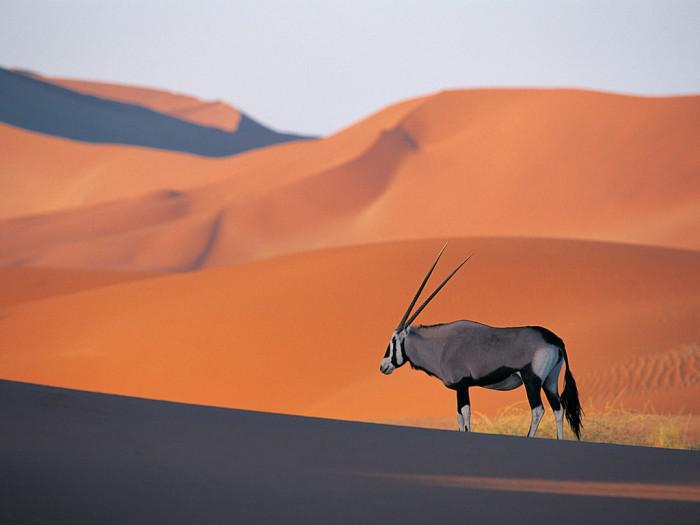
Desert Lions
Known as Africa’s apex predator, not many people know of or have seen the mysterious desert lions of Namibia. It’s astounding to even think that lions can survive in such a merciless environment.
Found mostly outside the protected areas in northern Namibia’s Kunene region, the desert lions are hardy and highly adapted to survive in these extreme conditions. They don’t need to drink water but get all the moisture they need from their kill such as ostrich, gemsbok and the occasional seal (if they dare catch one).
These magnificent creatures are unique to the Namib Desert and are vital in sustaining the Namibian tourism industry. Their biggest threat is man, in particular local communities that shoot them when they prey on their cattle. It’s thus crucial that conservation projects such as The Desert Lion Conservation Project are supported to manage not only the human-lion conflict, but also to monitor their behavior and population.
A fascinating new movie entitled ‘Vanishing Kings – Namibia’s Desert Adapted Lions’ is set to be released this year. It tracks a family of desert lions, their trials and tribulations and ultimate survival against all the odds through Namibia’s Kaokoveld. Your best chances of seeing these elusive and rarely seen lions is from Hoanib Skeleton Coast Camp.
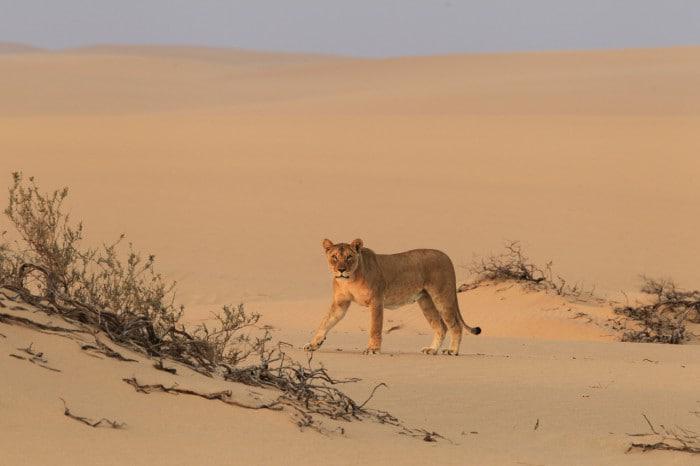
Desert Elephant
Another one of Namibia’s incredible desert-adapted animals is the unique and rare desert-dwelling elephant. Found only here and in Mali, these gentle desert giants can be found mostly in the rocky mountains, sandy desert, and stony plains of the Kunene region.
They are fascinating creatures, and it’s hard to believe that an animal that usually needs plenty of water per day can survive in this harsh climate and go without water for up to three days. Desert elephants usually travel in family groups made up of a female and her young as well as sisters and aunties. The adult bull, on the other hand, is solitary and can traverse large areas.
These animals have adapted to desert life by having smaller bodies, broader feet and longer legs than their African relatives. In the wet season, they prefer fresh young leaves and buds, but can survive on a myriad of drought-resistant plants in the dry season.
If you want to see these incredible elephants first-hand, we suggest booking into the luxurious Mowani Mountain Camp situated amongst a cluster of massive boulders in Namibia’s Damaraland. Switch off all your devices and succumb to the peaceful beauty of this prehistoric land with its dramatic stark landscape.
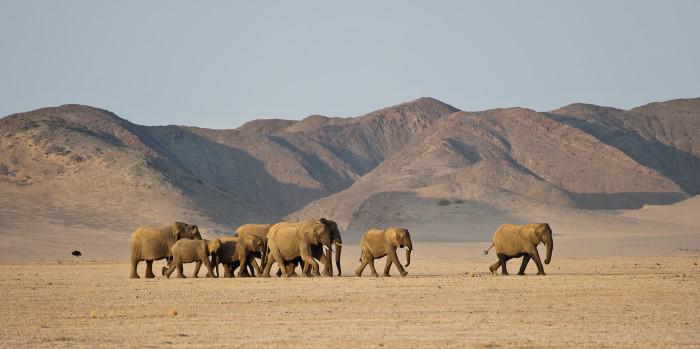
Black Rhino
If you want to see one of Africa’s rarest and sadly most endangered inhabitants in the wild, then going black rhino tracking in Namibia’s Damaraland is right at the top of your bucket list.
This part of Namibia is blessed with a wealth of desert-adapted plants, insects and animals. Slightly larger than their South African counterparts, the desert black rhino sport larger feet and have adapted to become great mountaineers, able to scale a mountain ledge to catch a cool breeze from the Atlantic, get out of the heat of the day and forage for tasty succulents.
They are also able to cover vast areas as large as 2500 km² in search of food. Usually rhinos need to drink plenty of water every night, but the desert rhinos have adapted in such a way that they only need to drink every third or fourth night, even though they have to cover huge distances.
If you seek wide open spaces and an encounter with the black rhino, we suggest either visiting Damaraland Camp set in the Torra Conservancy or Desert Rhino Camp in the rocky hills of the Palmwag Concession, both from the Wilderness Safari portfolio of camps and lodges. Known for awe-inspiring stargazing, as well as the location for the largest free-roaming black rhinos in Africa, this is a must-see destination full of desert plains and ancient rocky valleys.
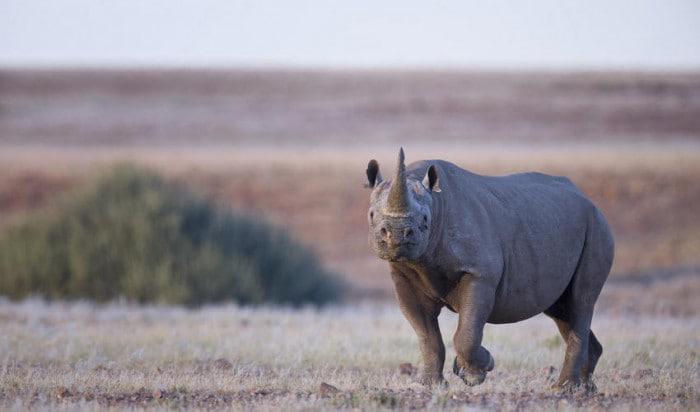
Fog Beetle
Another one of Namibia’s ingenious desert-adapted creatures is the fog beetle which relies on foggy conditions that prevail near the coast where the cold Atlantic Ocean meets the hot land, to collect drinking water. In the early mornings, this clever little beetle can be found doing a headstand whilst allowing the fog to condensate on its back and trickle down to its mouth. The fog beetle has been known to drink up to 40% of its body weight during its morning gymnastics.
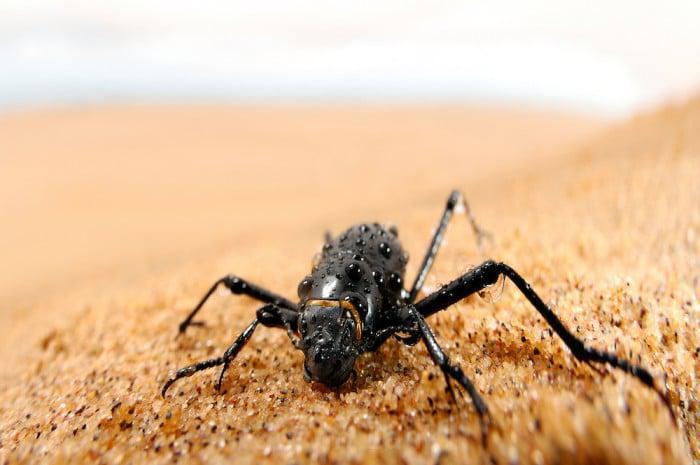
Other fascinating desert-adapted wildlife of the Namib Desert include: Baboon, Leopard, Cheetah, Brown and Spotted Hyena, Klipspringer, Springbok, Steenbok, Cape and Bat Eared Fox, Hartmann’s Zebra, as well as many insects, reptiles, small mammals and even wild Desert Horses. These wild horses can be found in the region of the historical mining town of Luderitz. They are the feral descendants of German cavalry horses from WW1.
Whether you are seeking solitude in one of Africa’s most spectacular landscapes, or want to experience the highly developed techniques that these animals display in order to survive in the Namib environment, either way, book your desert adventure to this extraordinary country.
